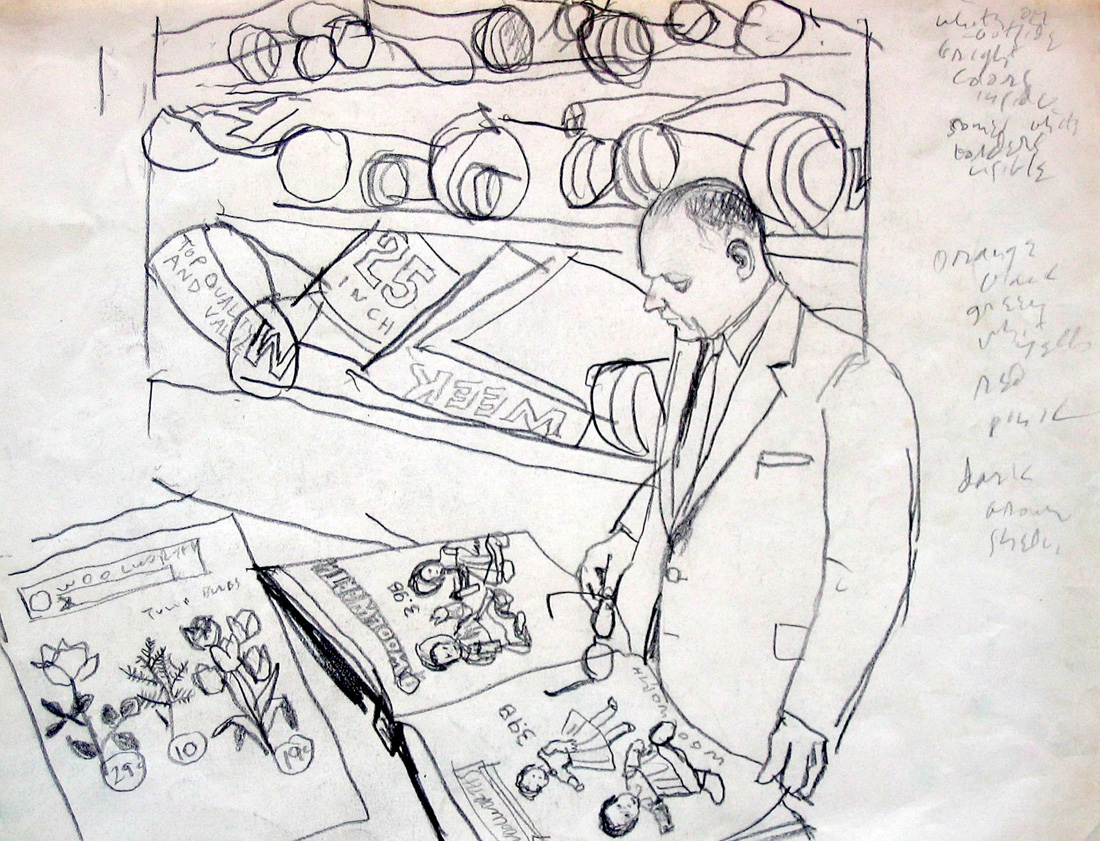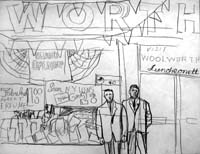In his “Songs for Drella”, Lou Reed claimed that no Michelangelo could ever come from the hicktown of Pittsburgh. But this does not stand up to close examination. Robert Weaver is from Pittsburgh and in 1949, the same year the other Pittsburgher Andy Warhol, the subject of Reed’s cycle of songs, moved to the metropolis of New York, Weaver, four years older than Warhol, was on his way to Italy to be trained, after finishing his art studies, two more years in tempera painting and fresco technique at the Academia delle Belle Arti in Venice.
In the city of lagoons, his interest in an unvarnished rendering of reality, already inspired by delving into the committed, socio-critical work of Ben Shahn, encountered the experience of a raw and passionate visualisation of everyday life in the emerging cinema of Italian Neorealism. “I was probably the only person in Venice who attended the premiere of Bicycle Thief,” Weaver recalls in a conversation with the author Steven Heller, “everybody else was dying to see American extravaganzas.”
After his return to New York, he unsuccessfully attempted to make a living by doing murals, until his eminent drawing talent was at last noticed by magazine editors. But his turn to illustration art was not a second choice. Throughout his life it remained a profession he was fully dedicated to with undivided passion.
As an artist, Weaver understood himself from the very start as a late successor of a strong, social realistic tradition that since its early days had permeated American art and, after a last surge during the period of depression and the ensuing New Deal phase in the 1930s, was buried quite abruptly under the predominance of abstract art, which Weaver deemed totalitarian. The insight that most representatives of this line of tradition had no reservations whatsoever – as opposed to their European artist colleagues – about the illustration trade (most members of the Tile Club and the later Ashcan group worked as magazine illustrators, some even as art directors) confirmed him in his choice of profession. With the unbroken self-awareness of being artist pervading his work as a magazine illustrator, he was completely in accord with his ideals.
And after just a short while, Weaver had enormous success in this field. Soon, almost all renowned American magazines ranked among his clients, from Time, Life, Newsweek, and The New York Times, to Sports Illustrated and Playboy, all the way to Psychology Today. In a survey among illustrators conducted by the specialist designer magazine “Print” in 1977, more than half named Weaver as their model. Despite the stylistic influence he had, particularly in the 1960s and 70s, he remained a solitaire in the field of commercial art with the rough and expansive artistic claim of his works. His very intense handwriting, with which he clearly positioned himself as an antipode of the pop strategists endorsing the smooth surface, has become foreign to the following generation of graphic artists growing up with Photoshop, so that today the forgetfulness of his own guild is compounded by the art world’s ignorance of this gifted illustrator.
The MePri has one of his drawings created in 1958, when he was commissioned by LIFE Magazine to accompany the senate election campaign of the later president John F. Kennedy with pencil and paper, as well as a portfolio of 10 drawings done in 1962 in the context of an illustration commission dealing with the prospects of promotion in the Woolworth Company. For printing, Weaver transferred a selection of uncoloured pencil drawings to gouache paintings, a method he described as “bathing the picture in the proper light.”
This visual reportage was commissioned by the renowned Fortune Magazine, which had been established in the 1930s as a journalistic organ especially for the heavy industries to illustrate the work ethic and euphoric belief in progress during the New Deal. Up into the late 1960s, Fortune Magazine was at the forefront in terms of graphic design and commissioned artists such as Walker Evans, Philip Guston, Georgia O’Keefe, Matta, Diego Rivera, Saul Steinberg, Ben Shahn, Domenico Gnoli, Richard Lindner, Bernard Perlin, Nicolas Solovioff, and Feliks Topolski with at times extensive illustration works.
Robert Weaver-Woolworth, from a portfolio of 10 drawings, 1962 (pencil on paper 27.5 x 35.5 cm)
What’s Come Over Old Woolworth? (Fortune, January 1969)

















All images © The Estate of Robert Weaver
